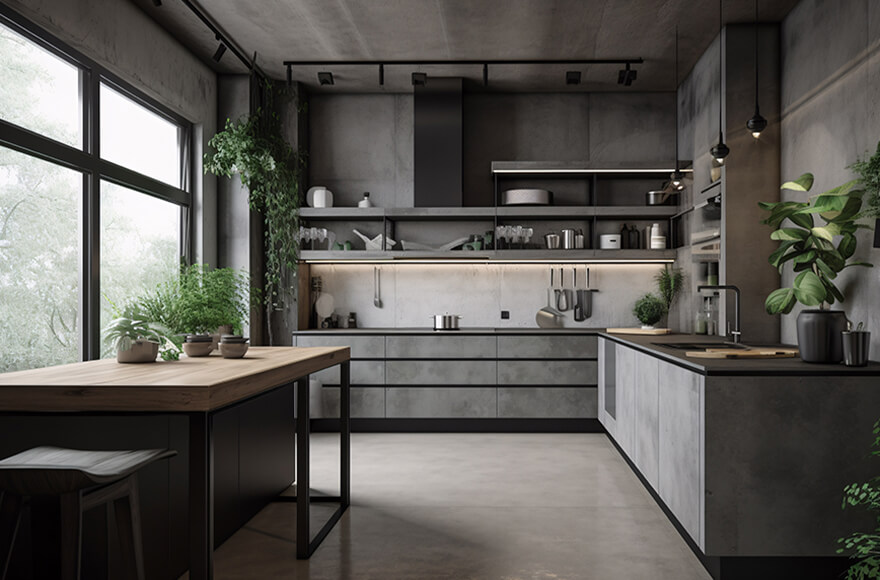Concrete, in terms of interior decor, has relatively recently become part of a selection of materials artfully researched for internal surfaces, but not only: it is also used for the composition and finishes of furniture and furnishing accessories.
While the perception of this material has undergone a revolution — from raw and purely industrial appearance to versatile contemporary expression — concrete furniture, far from being confined to outdoor spaces, now stands as key element to enhance interior design.
If it is true that today we have reached this innovative stylistic awareness, it must be said that the origin of concrete furniture can be traced back to the 1950s in New York: a period in which real estate costs skyrocketed, leading to a widespread conversion of abandoned buildings into residences and private properties. Old warehouses and factories have been transformed into lofts and offices with an airy atmosphere and industrial style. Spaces of this kind retained original structural elements such as pillars, iron columns, work tables, concrete ducts and beams, which then took on a new identity and function as furnishing elements.
In line with this concept, in the context of current interior design, concrete is taking on a more and more distinctive and multifaceted connotation of style. When applied to furniture and furnishing accessories, concrete adds the value of a contemporary and “casual” look, combined with other interesting aesthetic and functional qualities. Let’s see them together in this article.

The qualities of concrete for furniture and furnishing accessories
Concrete can be used to constitute or complement furniture and furnishing accessories ranging from the kitchen, to the living area, including bedrooms and bathrooms, thanks to its versatility and unparalleled contemporary look.
It is also a material rich in specific technical characteristics that determine a number of advantages, as well as interesting aesthetic and functional qualities:
Seamless appearance
The seamless continuity of concrete represents one of its main distinctive qualities. In fact, this material offers the possibility to create furnishing elements without visual interruptions, which add a neat and essential appearance to interior décor. Concrete in general offers many options for visual continuity, starting from the floor: it can be used to create niches, counters or bathroom furnishing elements, to convey an overall sense of purity and modernity.
Flexibility for a custom-made design
Flexibility is another typical quality of concrete, which makes it particularly suitable for custom-made designs. Its adaptable nature allows the creation of unique pieces, well suited to the specific needs of each environment. Whether in the case of a kitchen with minimalist lines or a living room with a more elaborate look, concrete allows for the most diverse interpretations and shapes, confirming its versatile nature and wide creative expression in interior design.

“Unfinished” look for a casual appeal
Concrete’s typical “unfinished” look gives furniture a casual appearance and internal spaces an atmosphere of relaxed, negligé elegance. Its rough, industrial look, which in the past could have been considered unrefined, today becomes an appreciated epitome of elegance and finesse. Concrete’s rough appearance gives character to furnishings, while creating a charming contrast with other more refined materials.
Great resistance
Concrete’s great resistance is another advantage to take into consideration in the context of interior design. Concrete furniture can withstand heavy loads and resist daily wear without compromising its structural integrity. This characteristic makes concrete a strategic choice for furnishings intended for frequent and long-lasting use.

Durability
Finally, concrete’s durability contributes to consolidating its position in the interior design world. Investing in furniture made with this material means opting for long-term solutions, with a positive impact on the ecology of design. Concrete’s durability translates into less need to replace furnishings over time, thus contributing to a sustainable perspective in home furnishings.
In this context, Microtopping® represents a unique concrete option to create seamless furnishing elements that perfectly combine the essence of the material with the ability to meet the specific needs of different environments, and a wide range of custom possibilities, including various textures and colour effects.